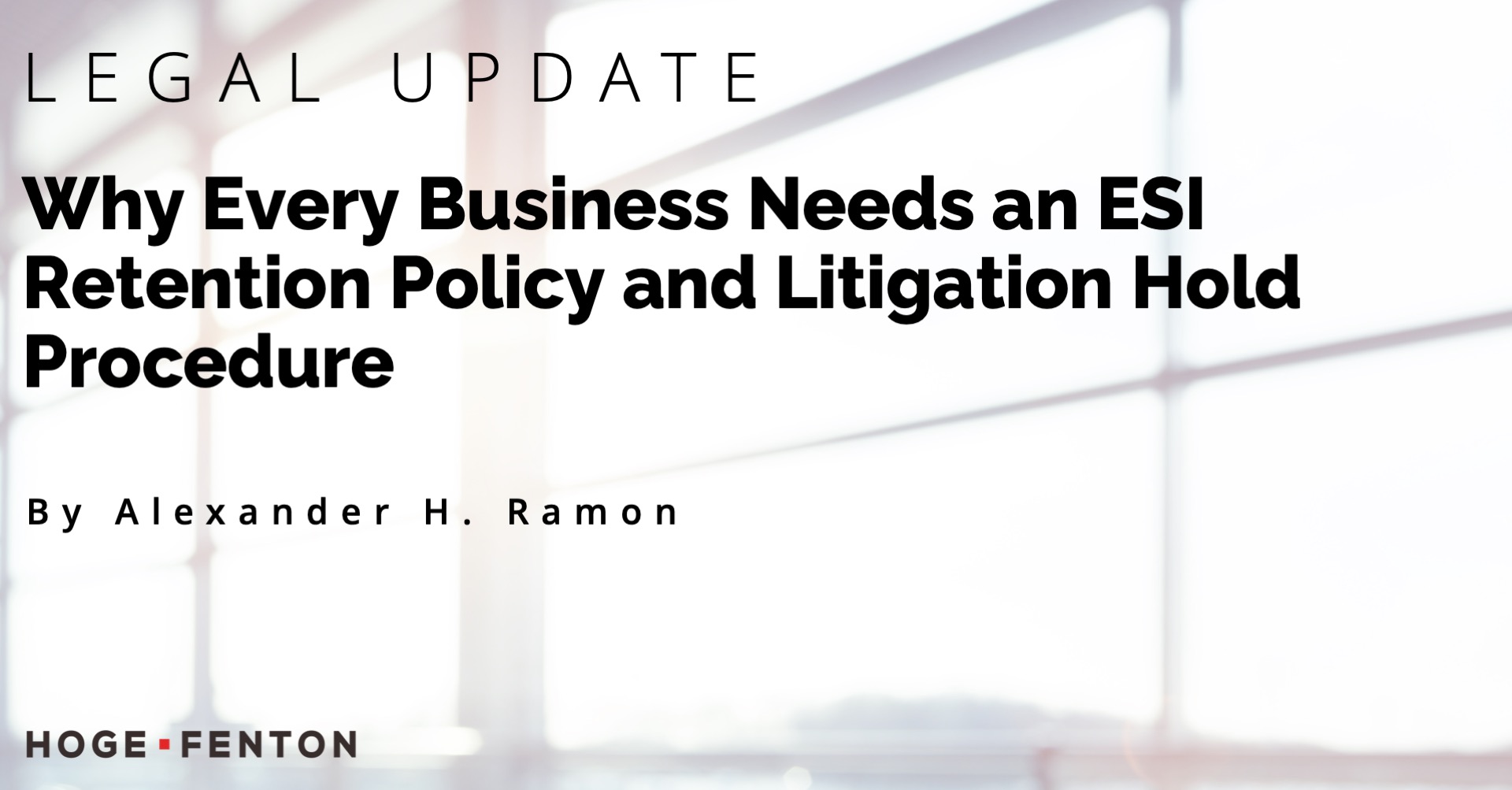Corporate Transparency Act Current Developments
By Alexander H. Ramon | 05.14.2025 | Business Litigation

Why Every Business Needs an ESI Retention Policy and Litigation Hold Procedure
How a company manages electronically stored information (ESI) can be the difference between prevailing in litigation or facing costly and damaging sanctions. Yet many organizations remain unprepared when litigation arises. Businesses must understand the importance of having a written ESI retention policy—and the equally important obligation to suspend that policy through a formal litigation hold when the duty to preserve information arises.
The Foundation: A Written ESI Retention Policy
Every company should adopt and implement a clear, written policy governing the retention and disposal of electronically stored information. This includes emails, documents, messages, and other data stored on company systems or with third-party vendors. The policy should describe how long various types of ESI are retained and outline regular, good-faith procedures for deleting data no longer needed.
Consistent application of such a policy offers more than operational clarity—it provides critical legal protection. The Code of Civil Procedure includes multiple “safe harbor” provisions (Code Civ. Proc., §§ 1987.2 subd., (b)(1), 2017.020 subd., (c)(1), 2031.320 subd. (d)(1)) that shield companies and their counsel from sanctions when ESI is lost, altered, or deleted in the routine, good-faith operation of an information system—so long as no exceptional circumstances exist. In other words, following its own policy can help insulate a client from claims of evidence spoliation and accompanying requests for evidentiary, issue, or terminating sanctions.
The Next Step: Litigation Hold Procedures
Once a company reasonably anticipates litigation, it must suspend its normal ESI destruction protocols and preserve relevant information. This is where a litigation hold—sometimes called a “preservation notice”—comes into play. Companies should have pre-drafted internal litigation hold templates ready to issue immediately when the duty to preserve arises. These notices must be sent to all relevant employees and contractors, informing them of their obligation to preserve any potentially relevant information. The goal is to document that your organization took reasonable and timely steps to meet its preservation duty. Our firm maintains an ESI playbook—accessible on NetDocs under the “ETeam” matter—which includes sample litigation hold letters and best practices for ESI management.
Notifying the Adverse Party
In many cases, it is also advisable to send a litigation hold notice to the opposing party. This formal communication puts them on notice of their preservation obligations and can serve as a key evidentiary marker. If the adverse party deletes or alters information after receiving such a letter, it becomes very difficult for them to argue that the destruction was part of a routine, good-faith system process. That can shift the focus—and potentially, the court’s ire—toward them.
One example includes a letter drafted by attorney Stephanie Sparks, notifying the opposing party of their duty to preserve evidence. A well-timed and well-documented notice like this can later serve as powerful evidence to challenge any claim that data loss was inadvertent.
Final Takeaway for Executives and Advisors
Being proactive about ESI management is not just an IT issue for clients—it’s a business imperative with legal consequences. Ensuring that clients have:
- a consistently followed ESI retention policy,
- ready-to-go internal litigation hold templates, and
- a protocol for notifying adverse parties of their preservation obligations can be a decisive factor in litigation preparedness and risk mitigation.









